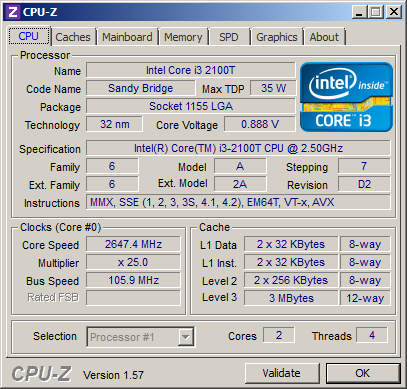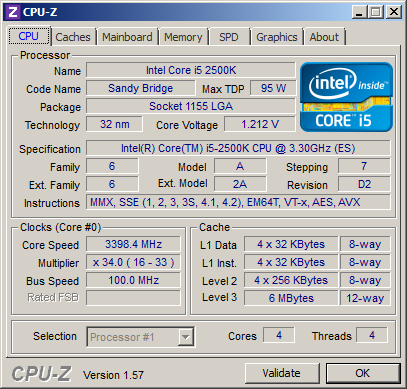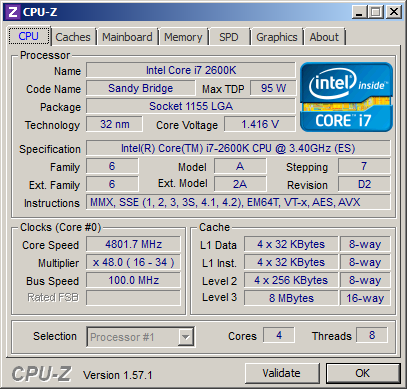Index
Overclocking:
i3-2100T:
As already mentioned, if your CPU has no Turbo you are out of luck. We managed a mere 150MHz increase with our 2100T using the BCLK. Going over 106MHz is nearly impossible, but maybe your board will manage. Because we thought it would be fun, we reduced the VCore to 0.9V.

i5-2500K:
If you have one of the K CPUs you can set the multiplier manually. Depending on the clock, you might either leave turbo as it is or disable it all together. The higher the clock the more unusable Turbo is. You can leave all energy savings enabled up to 3.9G/4G and you won't need any or just a slight VCore increase. We set our CPU to +0.05V offset VCore increase while the default core is about 1.25V. With 4.5GHz you need to disable the C6 power state, but depending on the board, it may be possible that the board will shut down any power savings. Of course without power-savings the power consumption will significantly increase for the idle mode. As you can see with 4.5GHz we are bordering 75°C, which may cause the thermal protection to kick in.

i7-2600K:
We could push it to 4GHz without even touching the VCore settings which is set by the boards at about 1.225V. Prime was stable at 4.5GHz, but the thermal protection kicked in sometimes. At 4.8GHz it was not possible to run Prime95 and our CPU cooler could not keep up with the heat. Namely, with all the cores under load, the heat protection kicked in regulary. We will see if this is valid for all boards or just a problem with the Gigabyte board. Next week we expect a new CPU-cooler, so we will keep you posted. Generally keep the CPU-core temperatures always under 75°C to prevent the cpu from downclocking due to heat.









